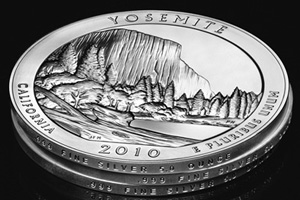 JP Morgan has “quietly reduced” their short silver positions. So is this going to take off the block on the silver market?
JP Morgan has “quietly reduced” their short silver positions. So is this going to take off the block on the silver market?
In the short term then yes it will, but it is probably a good idea to be a bit wary, even while accepting that silver has a good way to go up.
So what was the issue with JP Morgan? In essence JP Morgan had what was known as “naked shorts” which means that JP Morgan was essentially selling what it didn’t have. JP Morgan would sell you forty pieces of silver, or whatever, in three months time in the hope that the silver price would go down from the price that was agreed. If the price went down then JP Morgan would make a small profit as you didn’t exercise the option that it sold you. If the price went up, you’d make the profit and JP Morgan would make a loss. This is fairly standard practice.
The problem that JP Morgan had was that they sold a significant market moving amount of silver options. This was, so some more excitable silver followers claimed, lowering the price of futures which meant that the current price of silver could not help but be affected. It also put JP Morgan into a tight spot as they were in beyond their means. There were so much silver futures that JP Morgan would not be able to redeem it all meaning that it would have to scramble in the markets to buy the silver, meaning that it would be bankrupted.
Well that doesn’t seem to be happening. This looks like part of a staged withdrawal, orchestrated by the major players. The first step was a rise in the required margins on the options, which meant that all players had to have more silver on their balance sheets before playing with margins – and so cutting some of the frothiness out of the market. This is stage two.
JP Morgan was sailing far too close to the wind, even if they were not going to go bankrupt, and this quiet withdrawal means that their losses are real but limited. So there will not be that sudden spike as JP Morgan is held hostage by holders of physical silver that many silver bulls were expecting.
Silver is a really good inflation play, as well as being a reasonable industrial metal. In the long term its fundamentals have improved thanks to the excitable statements being safely out of the way.
 Another Precious Week
Another Precious Week After putting the program on hold earlier this week, today the United States Mint has relaunched the eagerly awaited America the Beautiful Silver Bullion Coins. If primary distributors wish to purchase the coins from the Mint, they must agree to a new set of terms and conditions, which includes price caps and very specific guidelines for distribution.
After putting the program on hold earlier this week, today the United States Mint has relaunched the eagerly awaited America the Beautiful Silver Bullion Coins. If primary distributors wish to purchase the coins from the Mint, they must agree to a new set of terms and conditions, which includes price caps and very specific guidelines for distribution. During November 2010, the United States Mint recorded sales of 4,260,000 American Silver Eagle bullion coins. This is significant since it represents the highest monthly sales total in the history of the program.
During November 2010, the United States Mint recorded sales of 4,260,000 American Silver Eagle bullion coins. This is significant since it represents the highest monthly sales total in the history of the program. Silver investors and coin collectors have been awaiting the final details of the United States Mint’s new silver bullion coins. Some preliminary information such as the design, specifications, and production levels have been revealed, but the premiums and exact release dates remain unknown.
Silver investors and coin collectors have been awaiting the final details of the United States Mint’s new silver bullion coins. Some preliminary information such as the design, specifications, and production levels have been revealed, but the premiums and exact release dates remain unknown. The Perth Mint is operated by Gold Corporation, which is wholly owned by the Government of Western Australia. The Perth Mint currently refines all of the gold mined in Australia, as well as gold from surrounding countries, and scrap gold from Asia. In addition, they refine substantial quantities of silver.
The Perth Mint is operated by Gold Corporation, which is wholly owned by the Government of Western Australia. The Perth Mint currently refines all of the gold mined in Australia, as well as gold from surrounding countries, and scrap gold from Asia. In addition, they refine substantial quantities of silver.